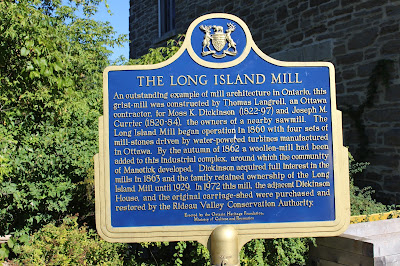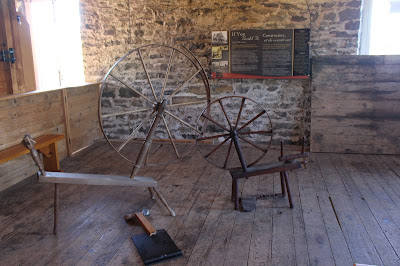When I went inside to photograph the interior I had no clue about any of it and, unfortunately I missed an entire floor as well as the turbines that power the mill. You will just have to go and visit the mill to see it all for yourself.
 |
| This gazebo overlooks the Rideau River from the Manotick Island. I checked it and the piano works, though it may need tuning. |
 |
| This building is not a mill though it has a sign saying 'Watson's Mill' on it. It formed a part of the operation as a carriage shed. Right now it houses a used book store. |































































